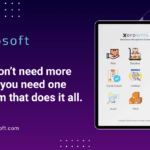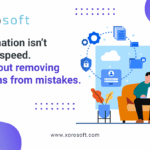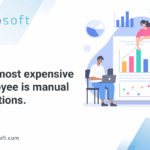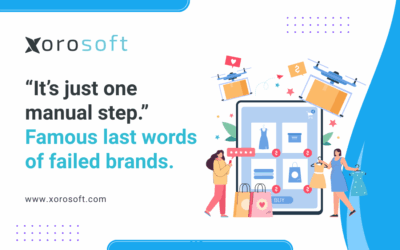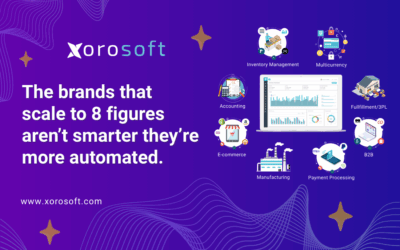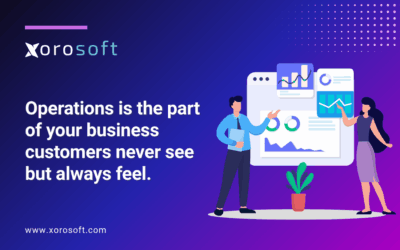
Growth Demands a Modern ERP Growth Tool
Scaling isn’t only about adding new sales channels. It’s also about ensuring your operations scale smoothly. A modern ERP growth tool helps you maintain control without slowing down.
You want to sell confidently across Shopify, Amazon, wholesale, and retail. However, you also need assurance that inventory, finance, and fulfillment data are aligned. When your ERP system serves as a growth tool instead of just ops software, you achieve that alignment.
As a result, manual handoffs and fragmented workflows disappear. Therefore, operations stop acting as a bottleneck and start becoming a driver of sustainable growth.
Outcomes That Modern ERP Unlocks
When ERP works as a growth tool, outcomes are clear and powerful:
-
Real-time stock visibility → confident purchasing and fewer stockouts
-
Streamlined order-to-cash → faster cash conversion and smoother scaling
-
Automated reconciliations → finance guiding strategy instead of chasing errors
-
Fulfillment clarity → customers who always get what was promised
-
Aligned teams → ops, finance, and leadership working from one source of truth
In addition, these improvements directly create smoother collaboration and stronger customer trust.
Avoidable Gaps That Block Growth
Even strong businesses experience gaps when volume rises. However, these challenges are avoidable:
-
Fragmented workflows: Teams update different systems, creating mismatched numbers.
→ Instead, unify workflows in a modern ERP growth tool. -
Manual handoffs: Orders, invoices, and POs bounce between departments.
→ Instead, automate repetitive processes for faster movement. -
Limited reporting: Leaders rely on delayed or incomplete data.
→ Instead, gain insight from real-time dashboards tied to ERP. -
Reactive inventory management: Buying only after shortages appear.
→ Instead, use predictive reports to stay ahead of demand.
Consequently, solving these issues means fewer delays and better-informed decisions.
A Framework for Implementing ERP as a Growth Tool
Adoption is smoother when you follow a framework: Discover → Design → Implement → Measure.
Checklist to begin this week:
1. Identify three handoffs that cause the most delays.
2. Map the journey of orders, invoices, and payments.
3. Highlight data silos that block visibility.
4. Pick one key metric to improve, such as order cycle time.
5. Involve finance and operations leaders together.
6. Shortlist modern ERP growth tools with Shopify/Amazon connectors.
7. Run a pilot in one location or channel.
8. Measure results after 30 days and refine.
This step-by-step method reduces risk while ensuring quick wins.
How Xorosoft ERP Becomes a Growth Engine
Xorosoft ERP was built for fast-growing brands needing control at scale. For example:
-
Real-time inventory sync → fewer stockouts → customers receive reliable promises
-
Built-in WMS → faster fulfillment → happier customers who reorder
-
Automated accounting entries → less reconciling → finance focuses on strategy
-
Trusted POs and timely reporting → confident cash decisions → easier reordering
-
Multi-location and lot/serial tracking → stronger compliance → leadership peace of mind
👉 See Xorosoft ERP on Shopify App Store
👉 Ranked #1 in Ease of Use on G2
Therefore, each feature translates directly into measurable business outcomes.
A Before and After That Proves the Point
Before: A retailer updated stock in Shopify manually, tracked finance in spreadsheets, and relied on late warehouse reports. Oversells occurred weekly, while month-end close dragged on for more than 10 days.
After: With Xorosoft as their modern ERP growth tool, real-time inventory sync and automated accounting cut cycle counts by 80%. Month-end close now takes just 2 days. Consequently, finance supports leadership with insights instead of chasing errors.
Tangible ROI From ERP Adoption
Metrics show why ERP should be viewed as a growth engine:
-
Order cycle time: 20–30% faster
-
Reconciliation hours: 10–15 hours per week saved
-
Stockout rate: 40%+ reduction
-
Cash conversion cycle: Shortened by 5–7 days
Moreover, these savings compound as order volume grows. Consequently, brands move faster while keeping costs predictable.
What a 60-Day Rollout Typically Looks Like
ERP adoption doesn’t need to feel overwhelming. Instead, a phased rollout helps reduce risk:
-
Weeks 1–2: Discovery (process mapping and data review)
-
Weeks 3–4: Design (configuration and integrations)
-
Weeks 5–6: Pilot (train warehouse and finance)
-
Weeks 7–8: Full rollout (reporting live and reconciliations automated)
By the end, all teams operate from one ERP growth tool. As a result, reports generate instantly and orders move without delays.
Common Questions Leaders Ask
Does it integrate with Shopify and Amazon?
Yes, stock and orders sync automatically.
How long does setup take?
Most implementations finish in 30–60 days.
What happens to existing data?
Historical data imports cleanly so you don’t lose context.
Do finance teams get live reporting?
Absolutely. In fact, real-time reporting comes standard.
Is training included?
Yes. Each role receives dedicated training.
Book a Demo of the Modern ERP Growth Tool
Book a demo and see how Xorosoft ERP helps Shopify, Amazon, wholesale, and retail brands grow with clarity and confidence.


